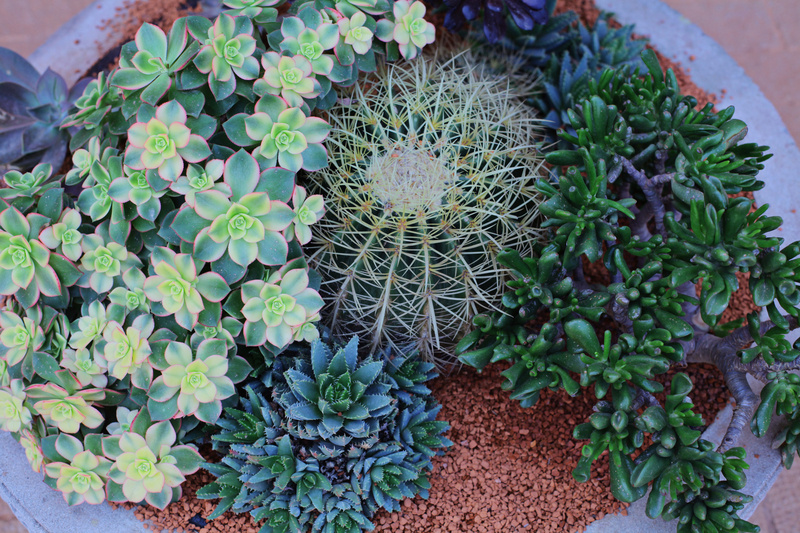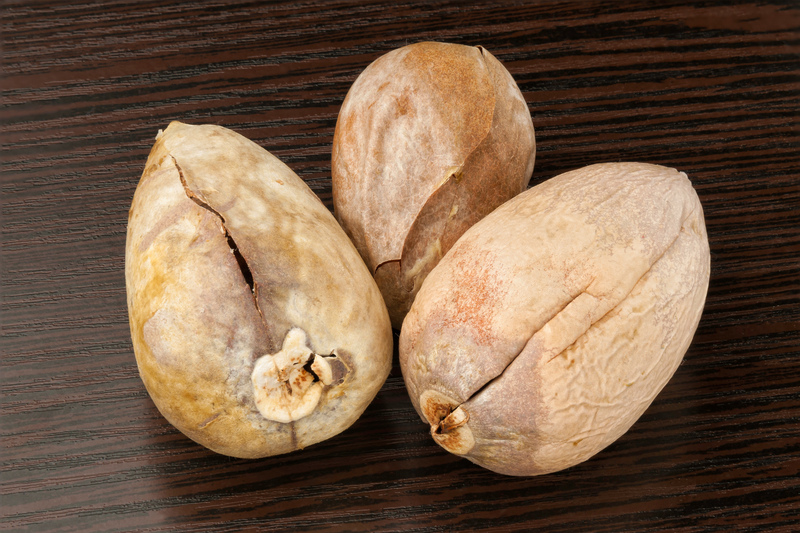The Orchid Care Blueprint for Stunning Blooms
Posted on 19/05/2025
The Orchid Care Blueprint for Stunning Blooms
Orchids have held a timeless allure with their exotic beauty and captivating blooms. Whether you're a seasoned collector or a curious beginner, the dream of achieving vibrant and long-lasting orchid flowers is within your reach. Welcome to the ultimate guide--The Orchid Care Blueprint for Stunning Blooms. In this detailed article, you'll discover not only the secrets to growing healthy orchids, but proven strategies to encourage them to rebloom year after year. With step-by-step advice and expert tips, this blueprint will transform your orchid-growing experience.
Understanding Orchid Types and Their Unique Needs
Before diving into orchid care essentials, it's critical to know that not all orchids are alike. The Orchidaceae family is vast, with over 25,000 species and countless hybrids. Focusing on the most popular varieties will help you tailor your care regime for spectacular orchid blooms.
Popular Orchid Varieties for Home Growers
- Phalaenopsis (Moth Orchid): Incredibly beginner-friendly, often producing beautiful blooms for months.
- Cattleya: Known for their large, fragrant, and colorful flowers.
- Dendrobium: Offer a wide range of shapes and colors, can rebloom multiple times per year.
- Oncidium: Featuring sprays of charming little flowers, often with a sweet scent.
- Vanda: Require higher humidity and light, but reward growers with vibrant, show-stopping blossoms.
Tip: Always identify your orchid type for targeted care.

Key Elements of the Orchid Care Blueprint
1. The Ideal Light Conditions for Lush Orchid Blooms
Lighting is one of the most important factors for achieving stunning orchid flowers. Most orchids thrive in bright, indirect sunlight. Here's how to provide the best light:
- Phalaenopsis and Dendrobium: Prefer east- or west-facing windows with filtered light.
- Cattleya and Vanda: Require more intense light; consider south-facing windows or supplemental grow lights.
- Light Levels: Leaves should be bright green. Dark, limp leaves signal too little light, while red or scorched leaves indicate too much sun.
Pro Tip: Rotate your orchid occasionally for even light exposure.
2. Watering Orchids the Right Way
Proper watering is a cornerstone of orchid care for vibrant blooms. Orchids are surprisingly easy to overwater, which can lead to root rot. Instead, follow these guidelines:
-
Use the "soak and dry" method.
Water thoroughly, allowing water to run out of the pot's drainage holes, then let the medium dry before the next watering. - Observe the Roots: Healthy roots are plump and green or white; mushy, brown roots indicate trouble.
- Frequency: Water about once a week, but less often in winter and for orchids in bark-based mediums.
Remember: It's safer to underwater than overwater your orchids!
3. Humidity and Airflow: The Hidden Magic
Orchids evolved in humid jungles, making moisture in the air crucial for optimal growth and flowering. Here's how to maintain the ideal environment at home:
- Target humidity: 40-60% is ideal for most orchids.
- Boost humidity: Place your plants on a water-filled tray with pebbles or use a room humidifier.
- Air circulation: Gentle airflow from a fan or open window prevents fungal issues and mimics natural conditions.
Tip: Grouping plants together can help maintain local humidity levels.
4. The Best Potting Mix for Happy Orchids
Orchids don't grow in conventional soil. Their roots crave air and structure. A well-draining orchid mix is a must:
- Bark chips: Common base for most orchids, allowing airflow and drainage.
- Sphagnum moss: Holds more moisture, suitable for higher-humidity-loving orchids.
- Charcoal, perlite, or coconut husk: Improve drainage and longevity of the potting mix.
Repot orchids every 1-2 years to refresh their medium and encourage healthy roots.
Advanced Care Techniques for Show-Stopping Orchid Blooms
Fertilizing for Flower Power
Orchids require fewer nutrients than many houseplants, but thoughtful fertilization is essential for triggering blooming:
- Use a balanced orchid fertilizer at half-strength every 2-3 weeks during the growing season (spring and summer).
- Switch to a "bloom booster" formula with higher phosphorus in late summer to encourage flower spikes.
- Always water thoroughly before and after fertilizing to avoid root burn.
Never use regular houseplant fertilizer on orchids--it's too concentrated and may harm the roots.
Creating the Optimal Temperature
Most common orchids prefer daytime temperatures of 65-80?F (18-27?C) and nighttime lows of 55-65?F (12-18?C). Interestingly, a drop in temperature at night is often the key to initiating flower spikes.
Cattleya and Phalaenopsis orchids, in particular, often need a few weeks of cooler nights after summer to signal them to bloom.
Encouraging Reblooming: Insider Tips for Repeat Success
One of the most rewarding aspects of orchid care is getting your plants to bloom again and again. Here's how to coax show-stopping blossoms from your orchids:
- Maintain regular care even after flowering ends.
- Continue feeding and proper lighting.
- Post-bloom care: For Phalaenopsis, leave the old flower spike until it turns brown--sometimes, they'll bloom off a "secondary spike."
- Resting period: Some orchids like a brief "rest" after blooming; reduce watering and fertilizer as new shoots form.
- Cool night temps: Expose plants to lower nighttime temperatures for several weeks to trigger new blooms.
Patience is the greatest virtue for every orchid enthusiast--some types only rebloom once a year!
Common Orchid Care Mistakes and How to Avoid Them
Are You Falling Victim to These Orchid Blunders?
- Overwatering: The #1 cause of orchid decline.
- Poor drainage: Never let orchids sit in water; always use a pot with drainage holes.
- Wrong lighting: Both too much and too little light stunt growth and inhibit blooming.
- Neglecting humidity: Dry air leads to shriveled buds and poor flower development.
- Skipping repotting: Old, broken-down medium chokes roots and saps plant vigor.
Keep a regular care schedule and observe your orchids--catching problems early is the secret to vivid, healthy orchid flowers.
Dealing With Pests and Problems: Keeping Your Orchids Thriving
- Mealybugs and aphids: Wipe with a cotton swab soaked in isopropyl alcohol.
- Spider mites: Use neem oil spray and increase humidity.
- Fungal/bacterial spots: Remove affected leaves, improve air circulation, and avoid wetting foliage.
Vigilance and proper hygiene defeat most pests--inspect new plants before bringing them home and keep your orchid area tidy.
The Orchid Bloom Cycle: What to Expect
Understanding the natural life cycle of your orchids helps manage expectations and guides your care efforts.
- Active Growing Phase: Leaf and root growth take center stage--support with ample water and nutrition.
- Flower Spike Formation: Triggered by seasonal changes or cultural cues, such as a temperature dip.
- Budding and Blooming: Lasts from a few weeks to several months; maintain steady care to prolong display.
- Dormancy/Resting: Some varieties need a rest after blooming, with reduced care.
With proper understanding and attention, this rhythm will repeat year after year, delighting you with lavish, colorful blooms!
Essential Supplies for Crafting an Orchid Paradise
- Orchid pots with side holes or slits for aeration.
- Specialized orchid potting mix (avoid regular potting soil).
- Balanced orchid fertilizer or bloom booster formula.
- Spray bottle for misting and managing humidity.
- Plant stakes or clips to support flower spikes.
- Digital thermometer and hygrometer for monitoring temperature and humidity.
- Sharp scissors or pruning shears (sterilized between uses).
Investing in the right tools makes the journey to stunning orchid blossoms smoother and more enjoyable.

Orchid Care FAQs
How often do orchids bloom?
With proper care, most popular orchids such as Phalaenopsis can bloom once or twice a year, with blossoms lasting from 2-6 months depending on variety and conditions.
Why won't my orchid flower?
Usually, inadequate light, lack of temperature variation, or overfeeding with nitrogen can prevent blooming. Review your orchid care routine and adjust as needed according to the care blueprint in this article.
Should I cut off dead orchid flowers?
Yes. Remove faded blooms to conserve plant energy. For Phalaenopsis, you can leave the spike until it browns completely, as a rebloom may occur from nodes below the spent flowers.
Is repotting stressful for orchids?
Repotting is vital for plant health when done every 1-2 years. Do it after flowering, using fresh, well-draining orchid medium--and always handle roots gently!
Conclusion: Your Path to Orchid Mastery
The Orchid Care Blueprint is your gateway to consistent, stunning blooms--whether you're a passionate hobbyist or a fresh enthusiast. By mastering light, water, humidity, feeding, and repotting, you'll create ideal conditions for your orchids to not only survive but thrive and flourish with spectacular flowers.
Remember to observe your plants, adapt your care through the seasons, and enjoy the patient, meditative journey that orchid growing offers. With the right knowledge and dedication, the dazzling displays of healthy, ongoing orchid blooms will become your rewarding reality. Let your orchid care journey begin--and may your home be filled every year with the magic of stunning orchids!

